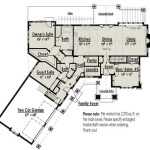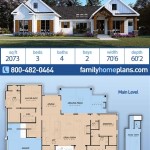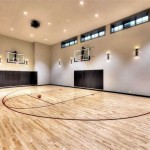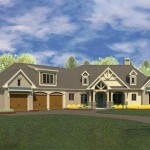Log Cabin A-Frame House Plans: A Comprehensive Guide
The log cabin A-frame house represents a unique blend of rustic charm and modern architectural design. Combining the warmth and natural appeal of log cabin construction with the striking visual statement of the A-frame structure, these homes offer a distinctive aesthetic and functional living space. This article delves into the intricacies of log cabin A-frame house plans, exploring their benefits, design considerations, construction aspects, and the various plan options available.
Benefits of Log Cabin A-Frame Homes
Choosing a log cabin A-frame design presents numerous advantages. Firstly, the A-frame's inherent structural integrity offers exceptional resistance to heavy snow loads and strong winds, making it an ideal choice for regions with harsh climates. The steeply angled roofline efficiently sheds snow and rain, minimizing potential damage. Secondly, log cabins, known for their excellent insulation properties, provide a thermally efficient living environment. The natural insulation of logs helps regulate indoor temperatures, reducing heating and cooling costs. Thirdly, the A-frame design often maximizes interior space, particularly in loft areas, offering unique and versatile living zones. Large windows integrated into the A-frame structure allow for abundant natural light and panoramic views of the surrounding landscape. Finally, the distinctive aesthetic appeal of a log cabin A-frame home creates a unique and inviting living space that blends seamlessly with natural environments.
Beyond these core benefits, the relatively simple construction of the A-frame structure can potentially reduce building costs compared to more complex architectural designs. The absence of traditional walls in the A-frame design streamlines the framing process, allowing for faster construction times. Furthermore, the use of natural logs contributes to a sustainable and environmentally friendly building practice. Log cabins are often constructed from renewable resources, reducing the carbon footprint associated with building materials. The natural beauty of the wood adds a timeless quality to the home, enhancing its overall value and appeal.
Key Design Considerations for Log Cabin A-Frame Plans
Designing a log cabin A-frame house requires careful consideration of several key factors. One of the primary considerations is the size and layout of the living space. The A-frame's unique geometry can present challenges in maximizing usable floor area. The sloping walls limit vertical space on the lower levels, requiring careful planning to ensure comfortable and functional living areas. Loft spaces are often incorporated into A-frame designs to compensate for the reduced wall height on the main floor, providing additional living, bedroom, or storage areas.
Another critical aspect is the placement and size of windows. Large windows are integral to the A-frame aesthetic, providing ample natural light and stunning views. However, the orientation of the windows must be carefully considered to minimize heat gain during summer months and heat loss during winter. Strategic placement of windows can optimize natural light while maintaining energy efficiency. Insulation is equally important, ensuring that the log cabin's natural insulating properties are maximized. Proper sealing of logs and the use of high-quality insulation materials are crucial for maintaining a comfortable and energy-efficient living environment.
The selection of appropriate log styles is also a significant design consideration. Different log styles, such as round logs, D-shaped logs, or square logs, offer varying aesthetic and structural characteristics. The choice of log style will influence the overall appearance of the cabin and the ease of construction. Furthermore, the foundation of the A-frame house must be carefully planned to ensure stability and durability. Depending on the soil conditions and the building site, various foundation options, such as slab foundations, pier and beam foundations, or basement foundations, may be suitable.
Interior design elements must complement the rustic charm of the log cabin. Natural materials such as wood, stone, and tile can be integrated into the interior design to create a cohesive and inviting atmosphere. Open floor plans are often favored in A-frame designs, allowing for a seamless flow between living spaces and maximizing the sense of spaciousness. Thoughtful consideration of interior lighting is also crucial, as the sloping walls can affect the distribution of light. Incorporating a mix of natural and artificial lighting sources can create a warm and comfortable ambiance.
Exploring Log Cabin A-Frame Plan Options
A wide range of log cabin A-frame house plans are available to suit different needs and preferences. These plans vary in size, layout, and architectural style. Small A-frame cabins, often referred to as "tiny homes," are ideal for individuals or couples seeking a minimalist and affordable living space. These cabins typically feature a single main level with a loft area for sleeping or storage. Larger A-frame designs can accommodate families or those seeking more spacious living areas. These plans often include multiple bedrooms, bathrooms, and living areas spread across multiple levels.
Some log cabin A-frame plans incorporate modern architectural elements, blending the rustic appeal of log construction with contemporary design features. These homes may feature sleek lines, large glass surfaces, and open floor plans. Other plans adhere to a more traditional log cabin aesthetic, emphasizing the natural beauty of the wood and incorporating features such as exposed beams, stone fireplaces, and rustic furnishings.
Prefabricated log cabin A-frame kits offer a convenient and cost-effective option for building a log cabin home. These kits typically include all the necessary materials, such as logs, windows, doors, and roofing materials, along with detailed instructions for assembly. Prefabricated kits can significantly reduce construction time and labor costs compared to traditional building methods. Customized A-frame plans are also available, allowing homeowners to tailor the design to their specific needs and preferences. Working with an architect or designer can ensure that the custom plan meets all building codes and regulations while reflecting the homeowner's unique style and lifestyle.
Furthermore, various online resources and plan providers offer a diverse selection of log cabin A-frame house plans. These resources allow prospective homeowners to browse different designs, compare features, and download detailed blueprints. Many plan providers also offer customization services, allowing homeowners to modify existing plans to suit their specific requirements. Careful research and evaluation of different plan options are essential to finding the perfect log cabin A-frame house plan that meets both budget and lifestyle needs. Understanding local building codes and zoning regulations is also paramount to ensure that the chosen plan complies with all applicable requirements.
The increasing popularity of sustainable building practices has led to the development of eco-friendly log cabin A-frame designs. These designs incorporate features such as solar panels, rainwater harvesting systems, and energy-efficient appliances to minimize the home's environmental impact. Green building materials, such as sustainably harvested logs and recycled content insulation, are often used in these designs. Eco-friendly log cabin A-frame homes offer a sustainable and responsible living option that aligns with environmental consciousness.
Ultimately, the choice of a specific log cabin A-frame house plan depends on a variety of factors, including budget, location, lifestyle, and aesthetic preferences. Careful planning and consideration of these factors are essential to creating a log cabin A-frame home that meets all the homeowner's needs and provides a comfortable, functional, and beautiful living space for years to come. The integration of modern technologies and design trends with the timeless charm of log construction ensures that log cabin A-frame homes remain a popular and appealing option for homeowners seeking a unique and sustainable living environment.
Construction Considerations for Log Cabin A-Frames
Constructing a log cabin A-frame home presents unique challenges that require careful planning and execution. The A-frame structure's inherent symmetry and structural integrity depend on precise measurements and accurate construction techniques. Ensuring the correct angle and alignment of the A-frame rafters is crucial for the overall stability of the building. Employing experienced contractors with expertise in log cabin construction and A-frame design is highly recommended.
The process of stacking and securing the logs requires specialized knowledge and equipment. Proper chinking or sealing between the logs is essential to prevent air leaks and moisture infiltration. Various chinking materials and techniques are available, each offering different levels of durability and insulation. Regular maintenance of the chinking is necessary to ensure its long-term effectiveness.
The installation of windows and doors in an A-frame structure also requires careful attention. The angled walls of the A-frame can complicate the window and door installation process. Custom-made windows and doors may be necessary to fit the unique dimensions of the A-frame openings. Proper flashing and sealing are essential to prevent water damage and air leaks around the windows and doors.
Electrical wiring and plumbing must be carefully planned and installed to comply with building codes and ensure safety. Concealing the wiring and plumbing within the log walls can be challenging, requiring careful consideration of access panels and maintenance requirements. Working with licensed electricians and plumbers is crucial to ensure the safe and proper installation of these systems.
Finally, the roofing system of a log cabin A-frame house must be durable and weather-resistant. The steep slope of the roof requires specialized roofing materials and installation techniques. Metal roofing, shingles, or cedar shakes are common roofing options for A-frame homes. Proper insulation and ventilation under the roof are essential to prevent condensation and ice damming. Regular inspection and maintenance of the roofing system are necessary to ensure its longevity and effectiveness.

Classic Design For A Low Budget Frame Project Small House Plans Floor

Classic Design For A Low Budget Frame Project Small House Cabin Plans Vintage Floor

Cabin Style House Plan 1 Beds Baths 593 Sq Ft 549 30 Houseplans Com

A Frame House Plans Everything You Need To Know Field Mag

Classic A Frame House Plan With Window Wall

10 Modern Luxury A Frame House Plan Drawings In 2024

A Frame Floor Plan 1 Bedrm Bath 908 Sq Ft 146 1841

A Frame Log Home With 3 Bdrms 1835 Sq Ft Floor Plan 108 1169

A Frame House Plans Everything You Need To Know Field Mag

Amazing A Frame House Plans Houseplans Blog Com








